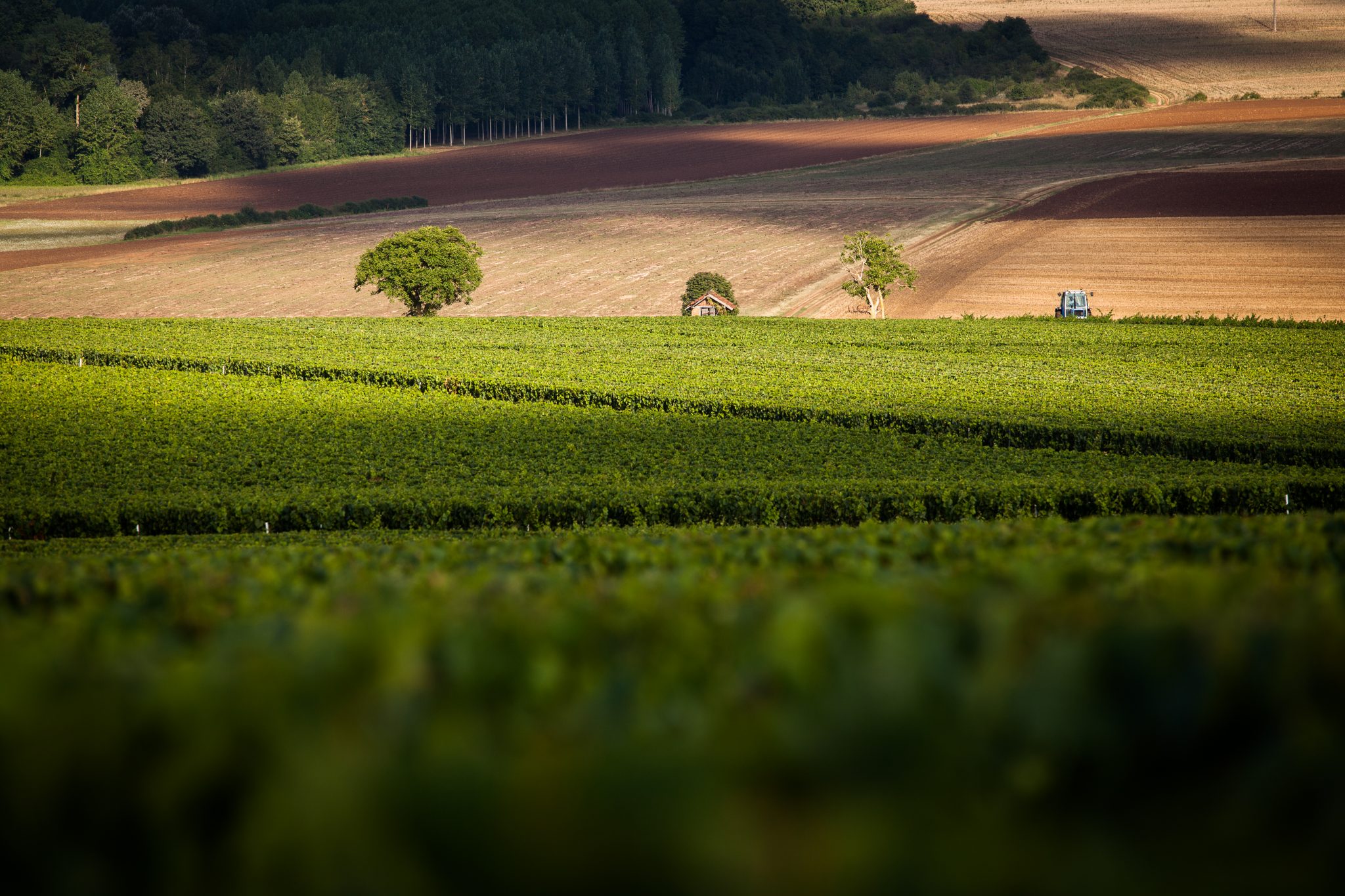

Last week, during a rushed couple of days in Burgundy, I managed to steal a couple of afternoons to have an early look at some 2023s. Many of the growers have only recently returned from their August vacations. Minds are focussed, and secateurs being sharpened, ready for the 2024 harvest, which should be getting underway any day now.
Taking advantage of the calm before the storm, I persuaded Mark Fincham to take me through some of his Marchand-Tawse reds, and Jean-Michel Chartron to show the Jean Charton whites, down in Puligny.
Such tastings are only ever going to provide snapshot impressions but I was keen to try and get some sort of insight into the wines we will be tasting in detail later in the year, and selling in January.
I approached these tastings to start building a ‘big picture’ of 2023, to get broad brush impressions and not to try and understand specific wines in detail. For this reason I did not take detailed notes – the November tastings will be for that – but spent time chatting with Mark and Jean-Michel, trying to get a feel for 2023 and learn a bit about how each of them see the vintage.
At Marchand-Tawse, the first thing you notice is how full the cellar is. Mark reckons he produced 50% more wine in 2023 than in any other vintage he has made here. This has had some interesting consequences for the wines and how they have been produced.
One of the things I have always enjoyed about this producer is their use of whole bunch fermentation. This has been employed quite liberally in the past, although it tends to provide an accent and counterpoint to the fruit, rather than dominating the wine. In 2023 there was simply insufficient space in the fermentation vats to accommodate all of the grapes in addition to the woody parts of the stems. As a result, Mark was forced to reduce the proportion of whole bunches in 2023.
A second consequence of the high yield was that, in 2023, the proportion of new oak barrels has had to be increased – because there was a greater volume of wine to mature than ever before. I spoke to Mark at length about this as it seems intuitive that, in a higher yielding vintage, the fruit would carry less intensity, and therefore be less able to cope with new oak influence. The 2023s I was tasting, however, did not bear this out. Even when tasting from a new barrel, the wines were not swamped by oak, spice or vanilla notes.
Undoubtedly there will be some 2023 reds that are at best non-descript, and at worst dilute and weedy. There are rumours of 1er Cru vineyards with the potential to crop at 100 hectolitres per hectare, and that is not going to result in particularly fine wine, but I was very positively surprised by what I tasted at Marchand-Tawse.
It does not wear rich, bold, fruit on its sleeve, but is quietly yet insistently expressive. There is plenty of delicacy and lots of savoury characters.
If, like me, you prize sophistication and nuance in red Burgundy, I think you can be cautiously optimistic that there will be wines of interest in 2023.
My tasting at Jean Chartron made a case for 2023 being a strong year for white Burgundy. We tasted from Santenay, Pernand Vergelesses and Savigny-les-Beaune blanc all the way up to Chevalier Montrachet ‘Clos des Chevaliers’ and Montrachet itself, by way of an array of Puligny 1er Cru wines. Again, I did not take notes on the specific wines, preferring to start to build a broader appreciation of 2023.
Like Mark Fincham, Jean-Michel enjoyed a generous harvest in 2023 but he feels that Chardonnay, particularly in his vineyards, was less prone to the most prodigious yields than Pinot Noir in the Cote de Nuits. Moreover, Chardonnay is able to achieve higher quality than Pinot at high yields, as recently shown by the 2018 whites and historically by years like 1982.
That could be interpreted as sweetness, but the wines were all perfectly dry with no residual sugar. Instead, what I mean is a sort of combination of fruit sweetness and the sweetness of blossom and white flower tones. A number of wines had a sort of citrus honey element.
These characters could be traced from the Santenay all the way up through the range, although there was a sense of crescendo in terms of intensity, complexity, volume and power. The Chevalier already has phenomenal length and, whilst the Montrachet is bigger and more muscular, the former will probably turn out to be the finer wine.
Jean-Michel said his biggest challenge was retaining freshness and ensuring his pH values remained low enough. This may well have been an issue of volumes, with acid intensity diminishing at higher yields. I did not find any particular lack of acidity but we both agreed that the wines will gain in tension as the complete elevage, with final SO2 additions and some fining.
The mantra of producer, PRODUCER, PRODUCER is familiar to everyone with a love of Burgundy, as is the folly of generalisations. Nevertheless, I found these early tastings very encouraging and left much more up-beat about 2023 than I had been feeling. We’re in the process of planning our much more intensive November tastings and I am excited to delve deeper into the wines and build a more detailed picture of the 2023 vintage.
– Matthew Hemming
To read more of our Burgundy related articles, please click here.